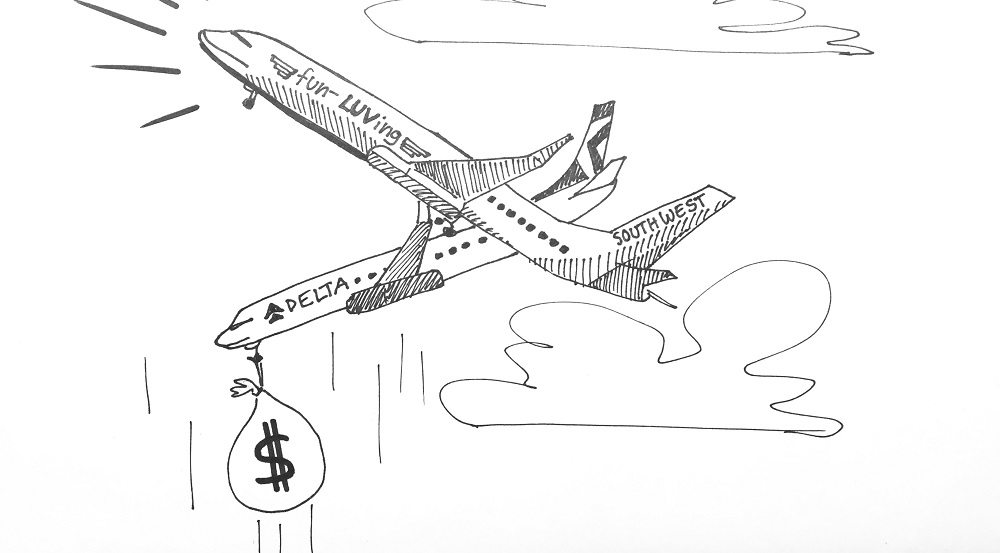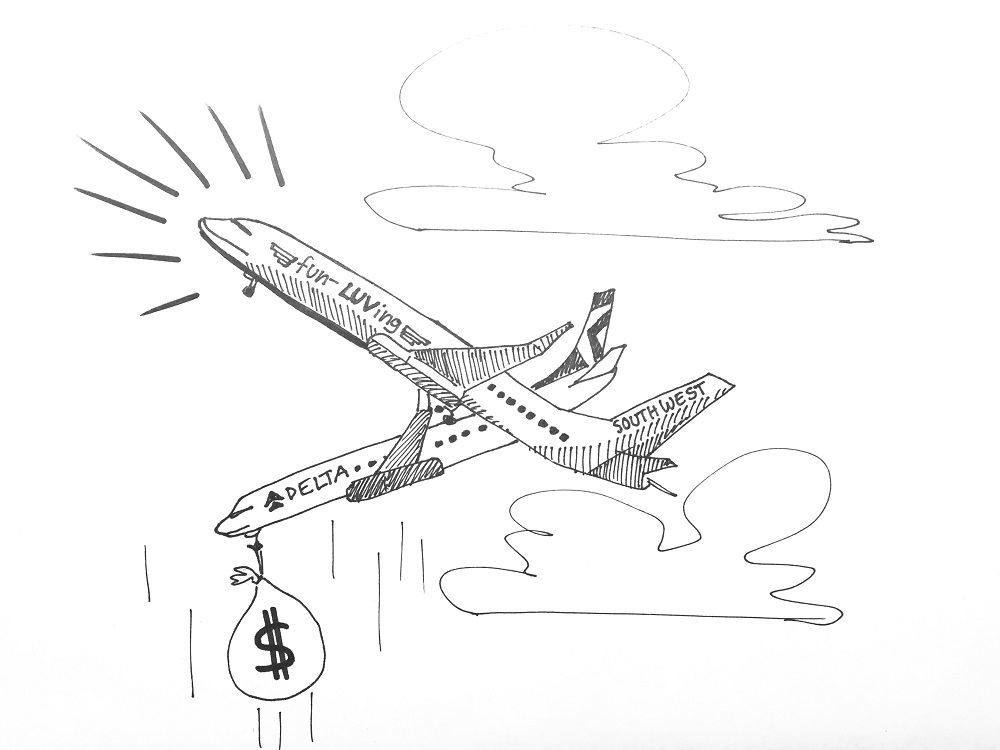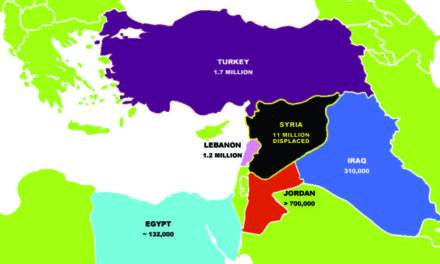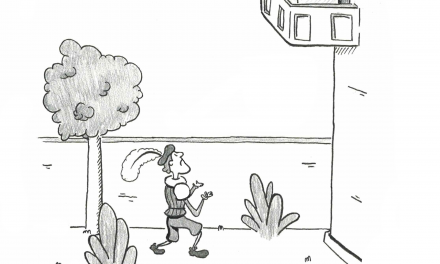Atlanta, sporting the nickname “Hotlanta,” earns some notoriety for its often blazing heat during the summer. But Southwest Airlines wants you to remember it by a different name: “Heartlanta.”
Southwest, which recently completed its integration with AirTran Airways (a process dating back to September 2010 when the two carriers announced intentions to merge), is ramping up its pursuit of local travelers with a new marketing push. Signs coated in the “Heartlanta” theme will decorate the city, and promotional fares designed to lure passengers from regional-hegemon Delta Air Lines will abound.
Most Emory students arrive at and depart from campus in the hands of Delta Air Lines, which presents itself as Atlanta’s hometown carrier. But, in doing so, many bypass a better travel situation. Southwest flies to about 40 cities nonstop from Atlanta, and boasts the nation’s most vibrant domestic service; so there’s a strong chance Southwest services wherever it is you call home.
Southwest actually turns two years old at Hartsfield-Jackson Atlanta International Airport this month, but until the start of this year it operated simultaneously alongside its subsidiary AirTran. On December 29, 2014, AirTran officially bid farewell to the airport and to the industry as its own entity, flying its final flight from Atlanta to Tampa, Florida. With entirely synchronized operations, Southwest, the airport’s second largest carrier, believes the time is right to engage in an aggressive battle for the heart of Atlanta.
Instant and broad access to Atlanta ranked highly among Southwest’s motivations for deciding to buy AirTran. Prior to the acquisition, Atlanta stood out as the largest market not served by the airline, the nation’s largest domestic carrier. And Southwest carries a distinct culture and reputation with it — as a fun yet low-cost airline — that it plans to employ in its attempt to sway customers from Delta.
The city of Atlanta should welcome Southwest with open arms. Traditionally, the presence of Southwest bodes well for capping airfares to and from a market. The U.S. Department of Transportation (DOT) in 1993 coined the term the “Southwest Effect” to describe the depression of fares when the low-cost carrier enters, or even threatens to enter, a new city. Southwest generally controls costs by operating only one type of aircraft (Boeing 737) to reduce maintenance expenses, by opting (for the most part) for secondary airports in larger cities with multiple fields, and by maximizing aircraft utilization and keeping turnaround times to a minimum.
Delta, which maintains its headquarters and a fortress hub here, controls over 75 percent of the local market share, and Atlanta desperately needs some formidable competition. Because it dominates such a large slice of the airport, Delta, free of much competitive threat, can almost individually set prices, subjecting Atlanta-area fliers to a “hub premium.” While potentially able to undercut AirTran, a much smaller airline by itself, on some routes, Delta will face far stronger headwinds in its duel with Southwest.
Some believe the “Southwest Effect” lacks some of the punch it used to carry, citing a recent uptick in fares from Atlanta. In particular, Vinay Bhaskara, an aviation analyst, proposed the “Spirit Effect” as an alternative, finding that Spirit Airlines applies more downward pressure to fares than Southwest. However, examining only the trend of base fares doesn’t represent an adequate apples-to-apples comparison, as Southwest offers fliers up to two free checked bags and an absence of change fees (the last major airline to do so, with JetBlue recently defecting). These represent major components of the total cost of flying; with Southwest and its more inclusively-defined airfare weighting more heavily in Atlanta’s airport data, and with airfares up 15 percent nationally since 2009, pinning the upswing of fares to a greed-hungry Southwest is misguided.
For most people, for most routes, Southwest continually emerges as the cheapest option more often than any other airline. While travelers might occasionally nab a better advertised fare elsewhere — perhaps on Spirit or Frontier, two airlines manifesting a new wave of ultra-low-cost carriers (ULCCs) overtaking the industry — all but the most bare traveler will usually end up paying more in the end from a slew of ancillary fees.
Spirit and Frontier (as well as Delta to a slightly lesser extent) have in recent years espoused the strategy of “unbundling,” the practice of stripping services from an airline ticket and tacking on an extra fee for them. It began with tagging a fee to a second checked bag, and later all checked bags, in 2008 when the economic downturn struck airline revenues (among other things). Since then, unbundling continued to overtake the industry, adding an additional fee for just about everything related to traveling. The result: airfares that look cheaper and grab the eye, but sum to just as much if not more, as airlines usually cut their base airfares by a disproportionate amount when instituting a new fee, in fact raising the price.
Southwest also incurred a substantial cost in its integration of AirTran. It purposefully blended AirTran slowly in a calculated effort to avoid a similar labor and culture conflict that plagued other airlines that merged over the years (Delta and Northwest serving as a prime example). With that process officially concluded, Southwest sheds those costs, and can therefore afford to reduce its fares. And if this marketing blitz offers any insight, it definitely intends to do so.
But Southwest offers its customers more than just consistently cheap flights. It boasts a unique culture crafted around three primary values: a “warrior spirit,” a “servant’s heart” and a “fun-LUVing attitude.” The “Heartlanta” marketing push and Southwest’s broader brand refresh, emphasizing the airline’s customers and employees along with its passion with a bold simplicity, demonstrate the continued importance of this identity to Southwest.
The airline industry as a whole is no stranger to public discontent and incessant moaning, falling in the company of the much loathed cable television and Internet-service industries. But, according to the DOT, Southwest almost always registers the lowest number of complaints per passenger. This suggests something very powerful about its legendary service and its ability to aptly resolve dissatisfaction when things go awry. Again, Atlanta should happily celebrate the presence of an airline concerned with more than its bottom line.
Southwest Airlines also offers a key ingredient evading many other airlines recently: punctuality. It often ranks in the upper tier when comparing the percentage of flights arriving and departing on time. Its ability to consistently operate in a timely manner stems largely from the airline’s point-to-point route structure, designed to facilitate direct flights rather than first shuttling fliers to and from a central hub, as Delta operates (as do each of the other remaining legacy carriers, including American and United) with a hub-and-spoke route system. Southwest instead runs a multitude of focus cities rather than a few hubs, minimizing the inefficiencies and sometimes rampant delays that result from such large operations while still offering a wide array of nonstop flights from a diversity of locations. Of course, as beneficiaries of Delta’s hub status in Atlanta, local residents maintain a wealth of nonstop flights; but they will benefit from Southwest competing with Delta, which monopolizes many routes from the airport, on a large number of flights.
Critics will point to a recent hiccup in on-time performance that caused Southwest to temporarily plummet in the rankings during the early months of 2014. Cramming more flights into its schedule combined with upward-moving load factors (the percentage of available seats filled) challenged the airline’s ability to remain on schedule.
But the evidence suggests that Southwest has returned to its historically-unmatched timeliness, or at least moving in that direction. Southwest tweaked with its schedule (with changes taking place last August) to allow for more wiggle room in between flights, resulting in a spike in its on-time percentage, landing it close to the top in January 2015.
It seems reasonable to attribute some of these struggles to growing pains lingering from Southwest’s merger with AirTran. But it’s also reasonable to believe, based on its promising history and systematic schedule revisions, that this rejuvenated on-time performance is sustainable, and that Southwest continues to reflect the punctual image it earned over the years. Meanwhile, Delta continues to rank well, but suffered a slip of its own during January. Delta will probably not fall very far, as unusual winter storms may have suppressed its performance, but undoubtedly Southwest represents a formidable competitor for those customers who enjoy arriving when promised.
And Southwest represents an especially formidable competitor for a college student body that demands both thrifty and easy travel. With a majority of Emory students calling somewhere outside the state of Georgia home, nearly all students here stand to benefit from the presence of Southwest a short distance from campus.
Alex McIntyre is a College freshman from Dallas, Texas.







